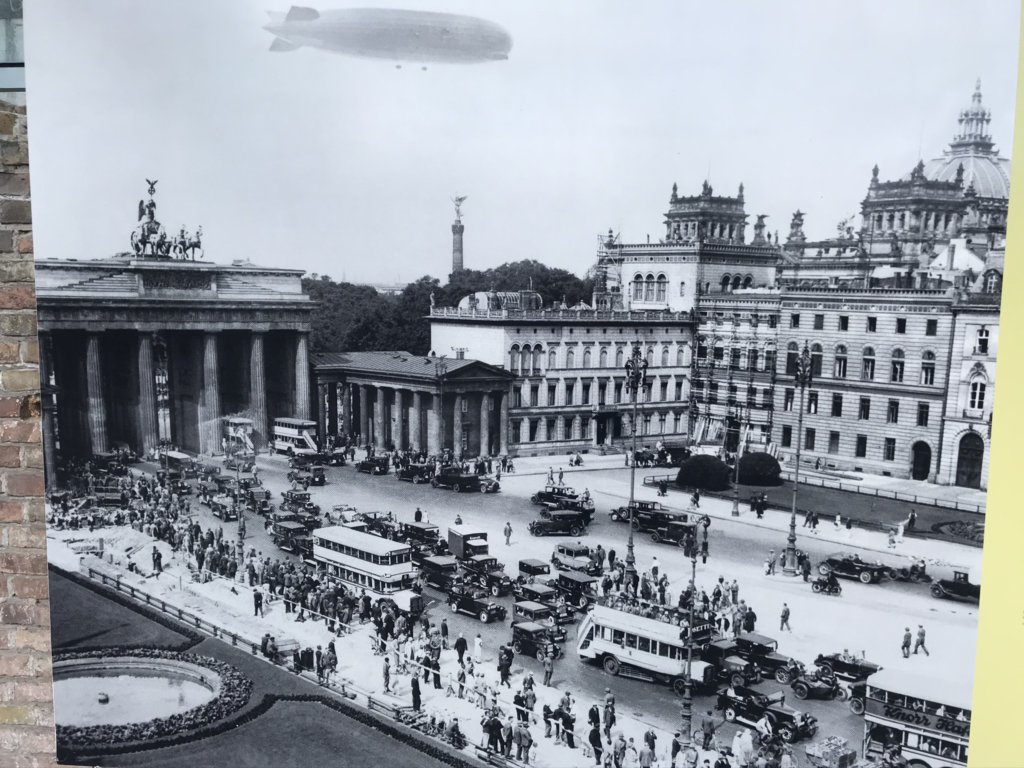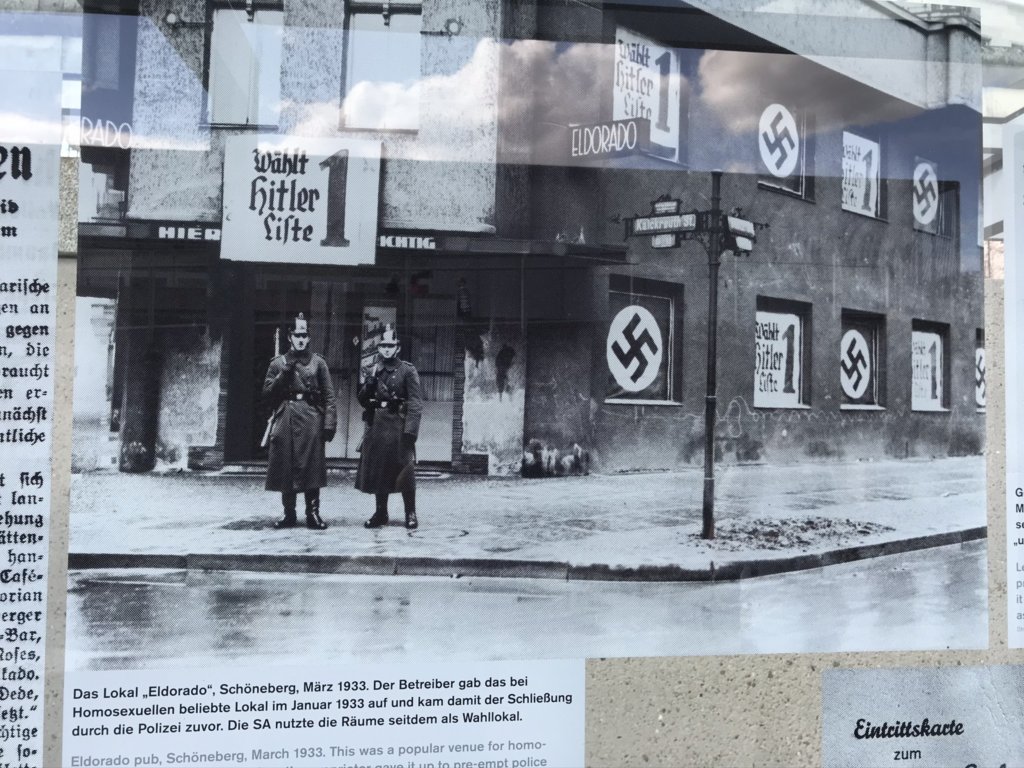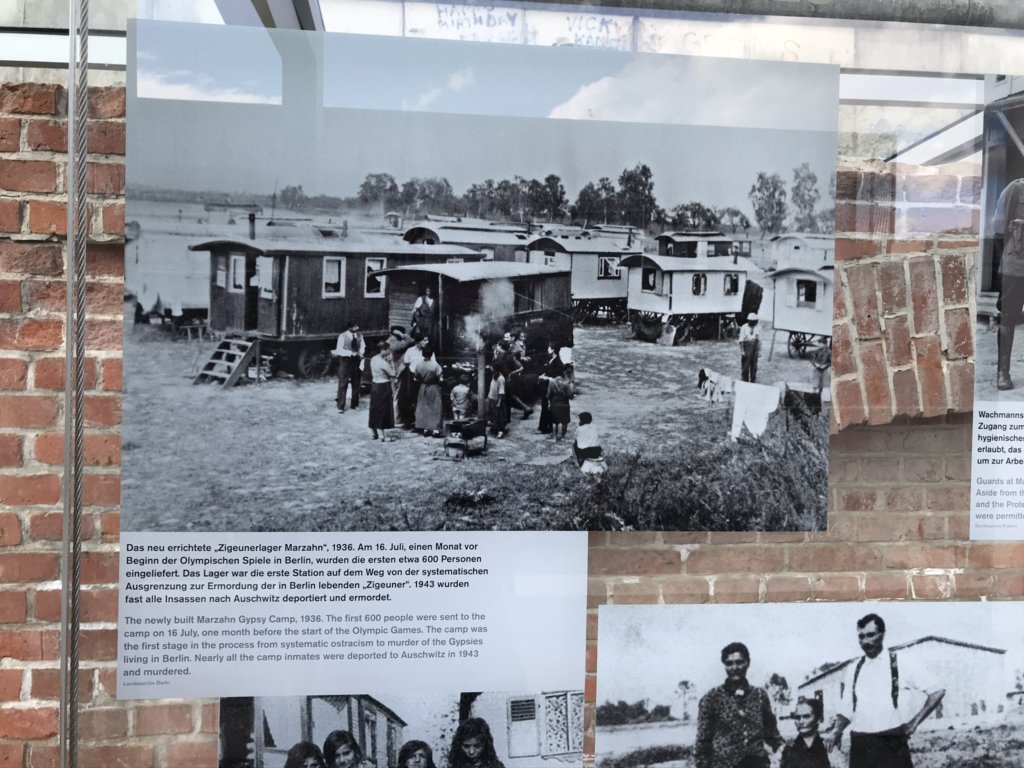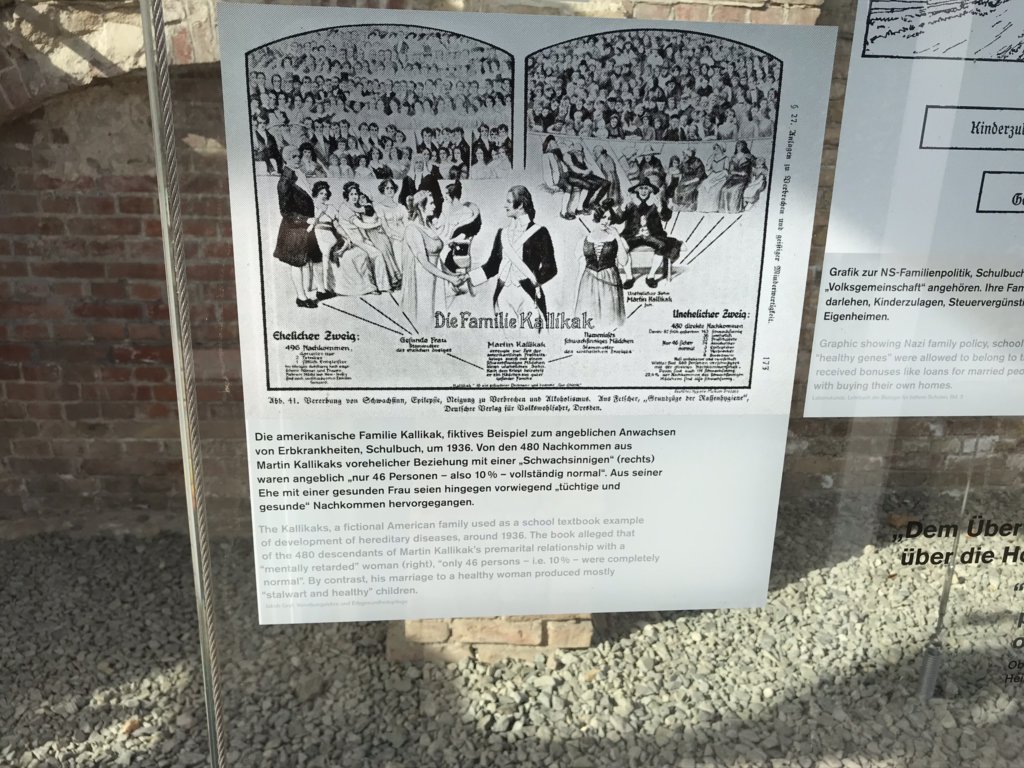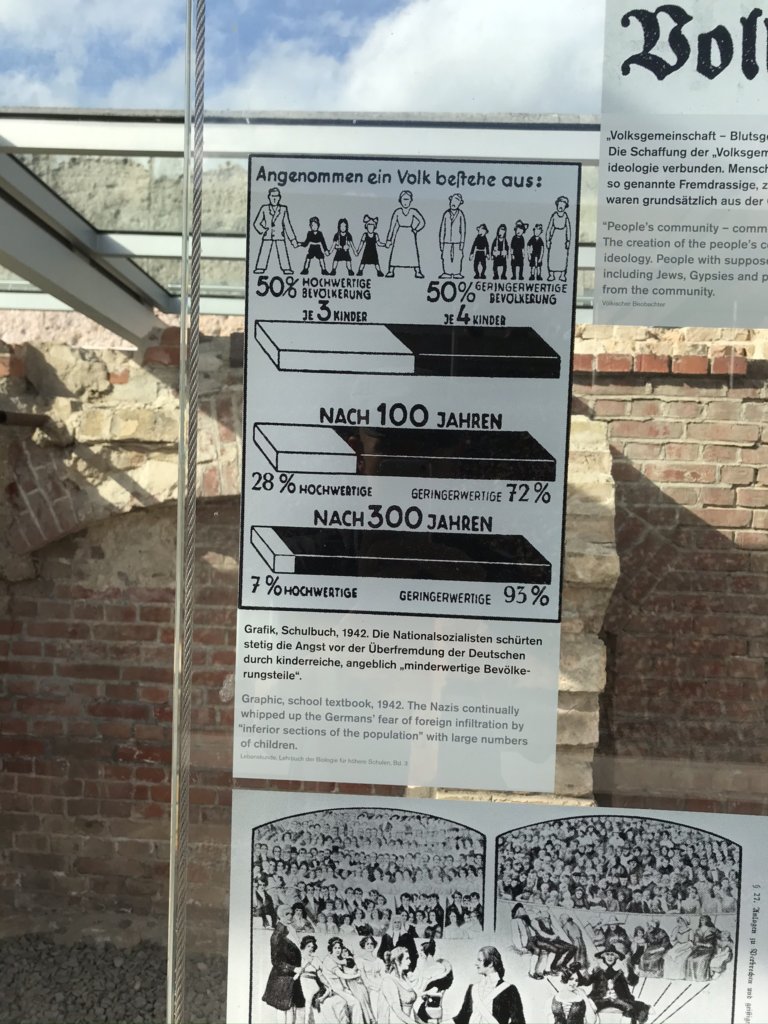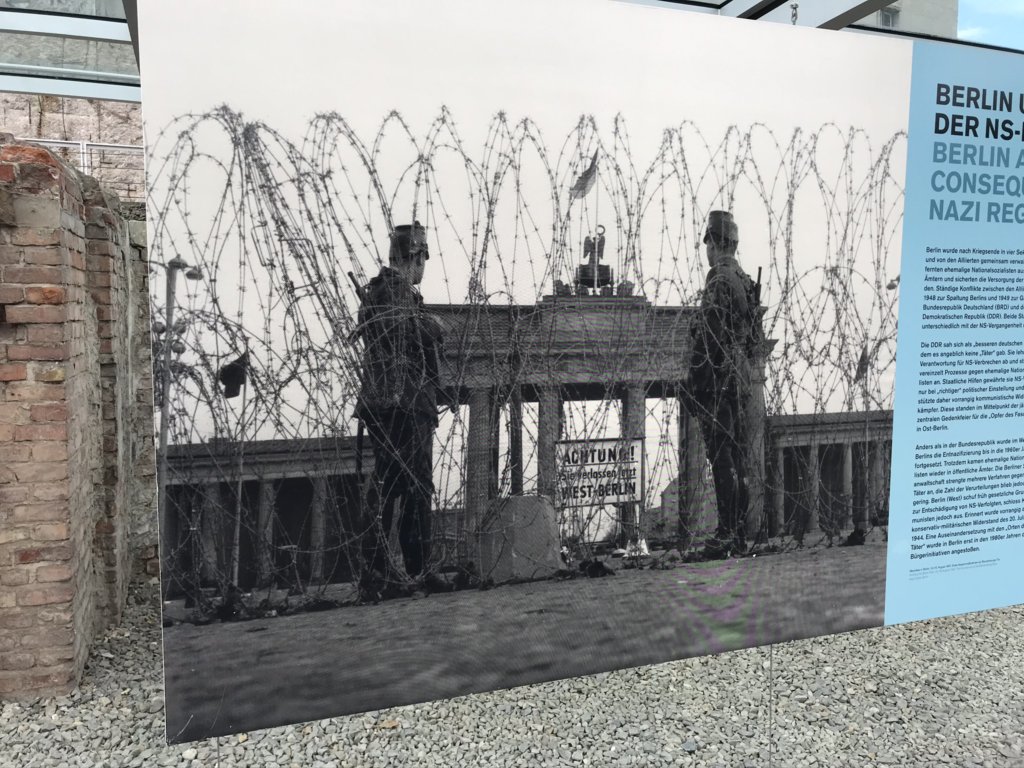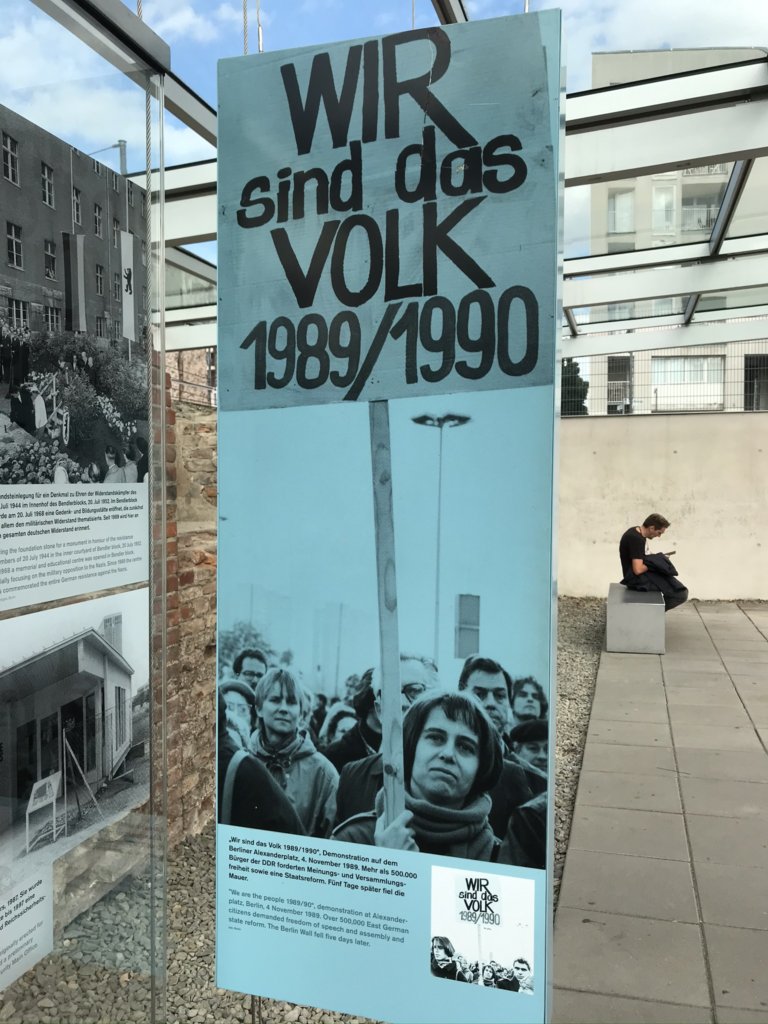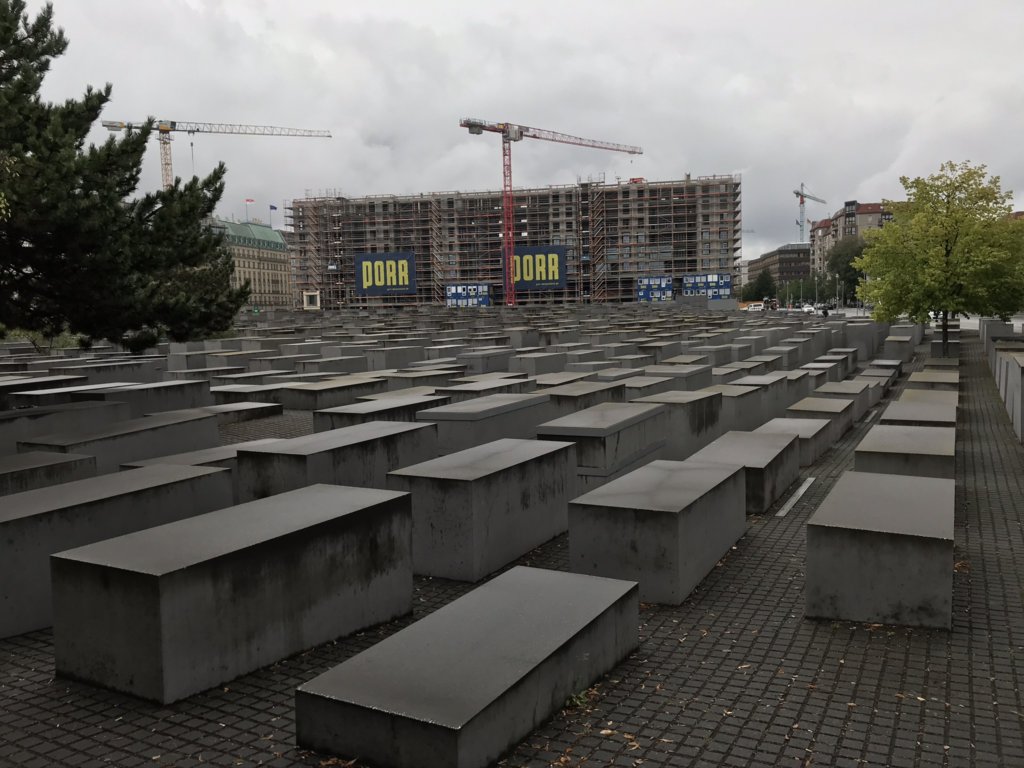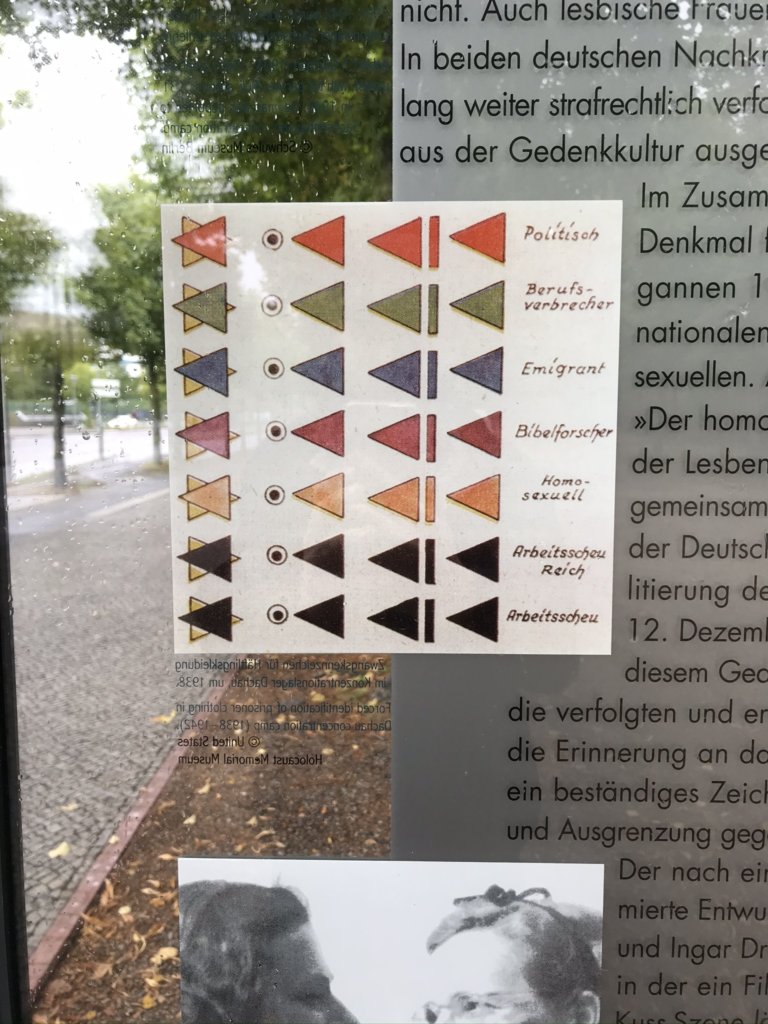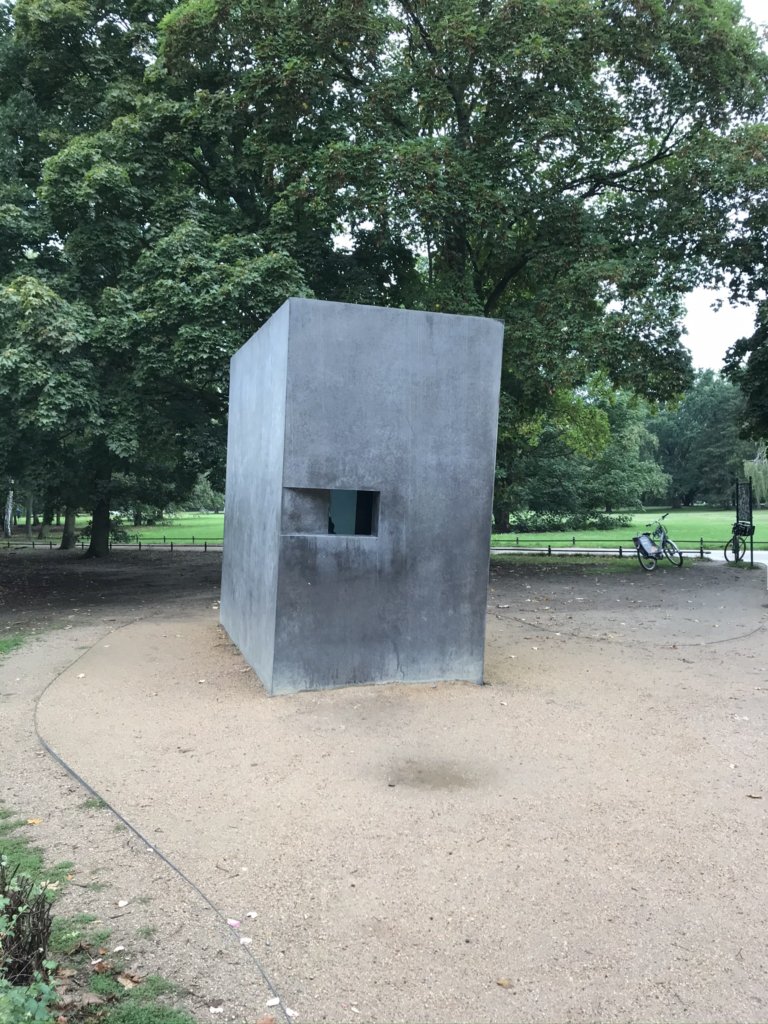Through most of the 20th century, Berlin was at the center of many of the horrific events that unfolded: the Nazis and their atrocities, as well as those committed by the Communists. Numerous monuments and memorials to all the victims can be found near the city center.
Topographie des Terrors
Not too far from Potsdamer Platz and Checkpoint Charlie you can find this outdoor museum. It's built along a still-standing section of the Berlin Wall, consisting of photo exhibits, chronologically arranged, showing the tumultuous events of the rise, rule, and fall of the Nazis, the divided-city Cold War era, and the fall of the Wall and East Germany. I visited this on Friday, September 4, 2020.
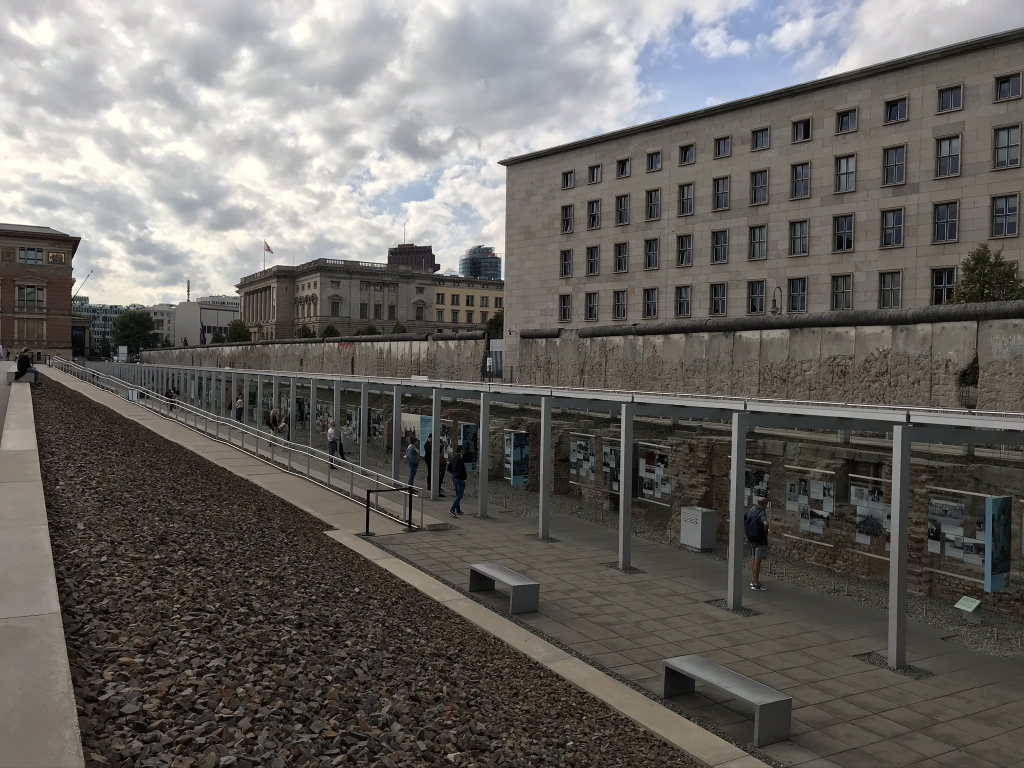
At the beginning of the walkthrough, we see a view of the Brandenburg gate in the before times, 1929, when life was good and no one suspected they were only four years away from living in a hellish dystopia. We retroactively call this era the "Weimar era" after the town where Germany's constitution of that era was drafted.
In this photo you can see how a remarkably too-ahead-of-its-time-for-its-time society was immediately followed by one of history's most inhuman and oppressive. Weimar-era Berlin used to have a thriving gay nightlife scene, and this building used to be a famous gay bar, Eldorado. When the Nazis took over the country in 1933, the owner sold the place before they could force him to, and then, as seen here, the SA turned it into an election headquarters. Just out of curiosity, I used the clues on the street signs to find this building on Google Maps. It still stands on the corner of Kalckreuthstraße and Motzstraße and is now an organic grocery store called Speisekammer im Eldorado.
These Roma and Sinti people, who we used to commonly call "gypsies," seen here confined at the Marzahn camp just outside Berlin were used as extras in a Leni Riefenstahl film, Tiefland ("Lowlands"), filmed between 1940 and 1944. They were all sent to their deaths at Auschwitz after filming wrapped. Riefenstahl, of course, denied knowing anything about this at the postwar trials.
Nazi eugenics propaganda from a late-'30s school textbook. It depicts two branches of a fictional American family which, over successive generations, diverged in mental and physical health due to their breeding.
More Nazi propaganda meant to make Germans afraid of immigrants out-breeding them and thus making Germany less German. I feel like I've heard these kind of arguments before.
After the war ended, the Nazis and their reign of terror were swept away, only to be replaced, at least in the East, by the Soviets and the East German regime. This barbed wire fence was eventually replaced by the oppressive Berlin Wall.
"We are the people 1989/1990." This photo is from a massive demonstration in Alexanderplatz, in downtown East Berlin, which went down on November 4, 1989. Over 500,000 East Germans gathered here to demand more rights and freedoms. No one knew that the Berlin Wall would fall only five days later.
Holocaust Memorials
Near Brandenburger Tor there are many memorials to everyone who was murdered in the Holocaust. I stopped by here on Saturday morning, September 5, 2020.
The biggest memorial is this one, the Memorial to the Murdered Jews of Europe, built between 2003 and 2004. There's 2,711 slabs here. No one's sure exactly how this memorial's design was meant to be interpreted, but many visitors have come up with their own interpretations, such as the field of slabs resembling a cemetery, or the identical drab blocks representing the Nazis' emphasis on conformity.
There is also a building here called the Place of Information which I didn't visit only because I didn't know it was there until long after I left. It contains exhibits related to the mass murders of Jews in the Holocaust, including a list of names of all known Jewish victims. If I'm ever in Berlin again I'll be sure to visit this place.
In the same area there was also the Memorial to the Sinti and Roma Victims of National Socialism. The Sinti and Roma, long called "gypsies" in English, are originally from northern India, have lived a nomadic life throughout Europe for about a millennium, and were targeted for genocide by the Nazis. I didn't get a good picture of the memorial but it consisted of a circular reflecting pool, ringed with the words of a poem, with a triangular stone in the center.
This chart, from the Dachau concentration camp, shows all the color-coded patches worn by the inmates of the camp, with each color representing the reason that person was imprisoned. This is worth a closer look. The top, red row is labeled "political," for anyone locked up for being, say, a Communist. "Berufsverbrecher" means "career criminal." You can probably guess the meaning of "Emigrant" and "Homosexuell." On the fourth row "Bibelforscher" literally means "Bible student" but here was used to refer specifically to Jehovah's Witnesses--yes, they were also among the Nazis' victims--as that sect sprang from a movement called the Bible Students. Those last two rows say "Arbeitsscheu" which means "work-shy"; on similar charts which I saw at the Topographie des Terrors, they were also labeled "Asozial" meaning "asocial." This category covered alcoholics, homeless people, and other such vagrants who couldn't hold down a steady job or otherwise fit into society.
This is where it started to hit me just how disturbing the Nazis' plans and intentions were. It's horrifying enough that they wanted to exterminate everyone in their borders that they didn't like; they had a whole vision of a society they wanted to create, an idyllic, peaceful, pristine utopia...and anyone who did not fit into that perfect vision was to be put to death. This realization felt more bone-chilling than any movie or documentary I've ever seen about the Holocaust.
This is the Memorial to Homosexuals Persecuted under Nazism. If you look through that little window you'll see a short film being played in a loop.

